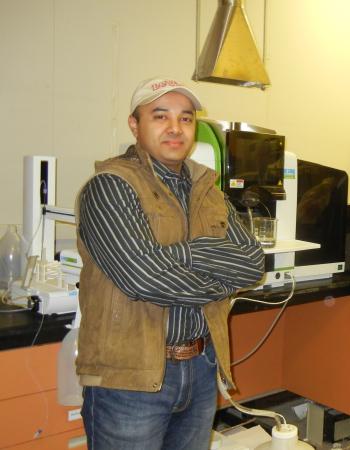Dissemination of sulfonamide resistance genes in digester microbiome during anaerobic digestion of food waste leachate
The preeminence of sulfonamide drug resistance genes in food waste (FW) and the increased utilization of high strength organic FW in anaerobic digestion (AD) to enhance methane production have raised severe public health concerns in wastewater treatment plants worldwide. In this regard, the dissemination patterns of different sulfonamide resistance genes (sul1 and sul2) and their impact on the digester core microbiota during AD of FW leachate (FWL) were evaluated. The presence of various sulfonamide antibiotics (SAs) in FWL digesters improved the final methane yield by 37 % during AD compared with FWL digesters without SAs. Microbial population shifts towards hydrolytic, acidogenic, and acetogenic bacteria in the phyla Actinobacteriota, Bacteroidota, Chloroflexi, Firmicutes, Proteobacteria, and Synergistota occurred due to SA induced substrate digestion and absorption through active transport; butanoate, propanoate, and pyruvate metabolism; glycolysis; gluconeogenesis; the citrate cycle; and pentose phosphate pathway. The initial dominance of Methanosaeta (89–96 %)
declined to 47–53 % as AD progressed and shifted towards Methanosarcina (40 %) in digesters with the highest SA concentrations at the end of AD. Dissemination of sul1 depended on class 1 integron gene (intl1)-based horizontal gene transfer to pathogenic members of Chloroflexi, Firmicutes, and Patescibacteria, whereas sul2 was transmitted to Synergistota independent of intl1. Low susceptibility and ability to utilize SAs during methanogenesis shielded methanogenic archaea against selection pressure, thus preventing them from interacting with sulor intl1 genes, thereby minimizing the risk of antibiotic resistance development. The observed emergence of cationic antimicrobial peptide, vancomycin, and β-lactam resistance in the core microbiota during AD of FWL in the presence of SAs suggests that multidrug resistance caused by bacterial transformation could lead to an increase in the environmental resistome through wastewater sludge treatment

The preeminence of sulfonamide drug resistance genes in food waste (FW) and the increased utilization of high strength organic FW in anaerobic digestion (AD) to enhance methane production have…

Owing to considerable energy constraints and global warming phenomenon, to find alternative sources of renewable and affordable energy has become a highly prerequisite in this current era.

Urbanization and a massive population boom have immensely increased the solid wastes (SWs) generation and are expected

